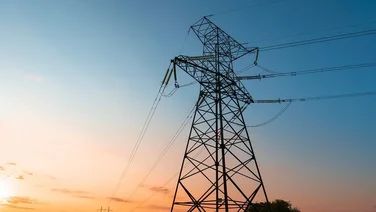- The UK exports 37% of its carbon emissions
- Only the US and Japan get other nations to emit more CO2 on their behalf
- The EU produces 9.9% of the UK’s emissions
The UK produced 424.5 million tonnes of greenhouse gases in 2021 – an incredible 27% less than the country did just 10 years ago.
We’ve cut our emissions by 154.8 million tonnes in a decade, and we now release just 6.3 tonnes per person – less than countries like Germany, Japan, and the US.
But that’s just the emissions we produce on these shores.
Behind the UK’s well-publicised achievements lies a disturbing secret: we get other countries to do our dirty work.
The UK games the system by shifting a large amount of our emissions burden onto other nations. Here’s how we do it, and why it’s hurting us.

How does a country ‘export’ its carbon emissions?
All countries must produce goods and services to satisfy their population’s needs and desires, which results in carbon emissions.
When a nation like the UK can’t fulfil its own production needs – or simply doesn’t want to – other countries can step in, handle some of the production, and sell items back to the UK.
In most trackers, the carbon emissions generated in this arrangement are counted as belonging to these other nations, not the UK.
The concept of importing and exporting goods is a foundation stone of the global economy, but is often used by wealthier nations to avoid blame for foreign emissions they’re responsible for.
Is the UK exporting its carbon emissions?
The UK exports 191 million tonnes of its carbon emissions.
That’s more than Belgium, Argentina, or the Philippines’ total carbon footprints.
The UK gets other countries to fulfil 37% of its consumption needs, including a majority of its manufacturing emissions.
In the eyes of the world, these other nations will then shoulder the blame – despite the fault lying with the UK.
Where is the UK sending them to?
The European Union produces the biggest portion of the UK’s foreign emissions, at 9.9%, followed by China on 7.3%.
Are other countries doing this too?
Absolutely.
32 countries have consumption needs that outstrip their production capabilities, so they export part of their carbon footprint – but some pass off more emissions than others.
The US and Japan get other countries to emit the most CO2 in order to fuel their damaging consumption habits, followed by the UK and fellow European heavyweights Germany, Italy, and France.
While it’s important to look at the raw figures, it’s also crucial to consider which countries export the highest percentage of their consumption needs.
Otherwise we’d be letting some smaller nations off the hook, and that just wouldn’t do.
The UK, France, and Italy rank highly in this measurement too, showing how deep in this mire they are – but small, wealthy nations like Switzerland come highest.
What’s wrong with exporting your emissions?
Lower standards
Emissions are the same wherever they’re produced, right? Nope.
High-income nations are more likely to use fuels and practices that are better for the environment in their manufacturing.
When they export these processes, they usually hand over control to countries where climate restrictions are more lax.
This means most manufacturing processes release more emissions than they would have if they were carried out at home – and that’s before you factor in the CO2 cost of importing the goods.
A lack of transparency and accountability
It’s difficult to hold countries to account if they hide part of their emissions.
The UK government still only includes ‘territorial’ emissions in its main reports, which excludes foreign emissions that the UK is responsible for.
This is standard practice across the world, which means we simply ignore the emissions burden that higher-income nations like the UK, Switzerland, and Singapore place on other countries.
And it’s a widespread problem. 32 nations currently export 2.8 billion tonnes of CO2 per year, passing off a large chunk of their responsibility for climate change to others.
This allows them to create the false impression that they’re rapidly slashing their CO2 output, when a significant proportion of their eliminated emissions are still emitted – just elsewhere.
For instance, China releases 1.2 billion tonnes of CO2 each year to fuel the consumption needs of other countries.
Ever heard someone say cutting emissions is pointless if China doesn’t make an effort too? Next time, tell them China produces 13% more emissions than it needs to, because of countries like the UK.
If we cut our consumption, China will cut its emissions.
Is the situation getting worse?
In the UK, the situation is improving, though from a low bar.
In 2016, the UK exported 46% of its carbon emissions – which fell to 43% in 2018, then to 37% in our latest calculations.
The fact this figure is dropping as the UK’s overall carbon footprint is also shrinking is encouraging – though 191 million tonnes of exported emissions is still far too high.
Looking forward
If the UK is truly a climate leader, it must put its total emissions front and centre – including the emissions it exports.
That way, the public can easily hold the UK accountable for every tonne of CO2 it’s responsible for.
It would also emphasise how important it is to financially help other nations to decarbonise their manufacturing processes, instead of crossing our fingers and hoping China, Russia, and countries in the Middle East and Africa become more eco-friendly on our behalf.
We won’t reach net zero or tackle climate change effectively if we just pretend our exported emissions don’t exist.






